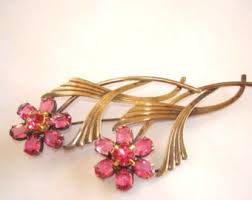I am always fascinated by the ways in which genealogy can lead you into an area that you did not expect. Last week I blogged about Abel Richards and his service in the Revolutionary War. While researching him, I noticed that two of this brothers, Edward and Nathan had moved from Dedham, Massachusetts to Attleboro, Massachusetts. So I decided to find out a little about the Richards in Attleboro.
Sometimes, when I do not know much about an area, I start by reading about its history. On Archive.org, I found Sketches of the History of Attleboro. I was very surprised to read that Attleboro described itself as the center of jewelry manufacturing. There were more different jewelry companies in Attleboro than I could keep track of. Very often, a company dissolved and restructured with a new partner or combination of partners and a number of those companies involved one or more Richards.
I was curious to know whether or not there were any Richards involved in manufacturing jewelry now. According to Google, the W. E. Richards Company is there and continues to make jewelry. The site for Jackson Jewels under Symmetalic described the company as follows:
“The W.E. Richards Company was founded in North Attleboro, MA in 1902 producing wRe and Symmetalic costume jewelry of sterling silver with 10K and 14K gold overlay metal with jewelry consisting of Art Deco, Edwardian and Victorian designs using finer high quality materials, cultured pearls, Austrian rhinestones and aurora borealis rhinestone crystals, with some pieces produced containing semi precious stones. The costume jewelry included broaches, rings, scarf and hat pins, links, emblems, and pendants. Mark: "wRe". "Symmetalic" since 1936. The company is still in business today and the jewelry is highly sought after."

 So my next step was to look see if I could find any of the jewelry for sale. Both Ebay.com and Etsy.com had a number of pieces. many of which I would be more than happy to wear. There were lots of pins,
So my next step was to look see if I could find any of the jewelry for sale. Both Ebay.com and Etsy.com had a number of pieces. many of which I would be more than happy to wear. There were lots of pins,some bracelets, especially scarab bracelets,
and necklaces or pendants.
I was curious to know what kind of jewelry W. E. Richards was making now, so I called their main office in Attleboro. I discovered that the company sells midrange high quality women's jewelry, typically made with 14 carat gold and colored stones. The jewelry is sold only through jewlery stores.
I think it may be time for me to shop.








































